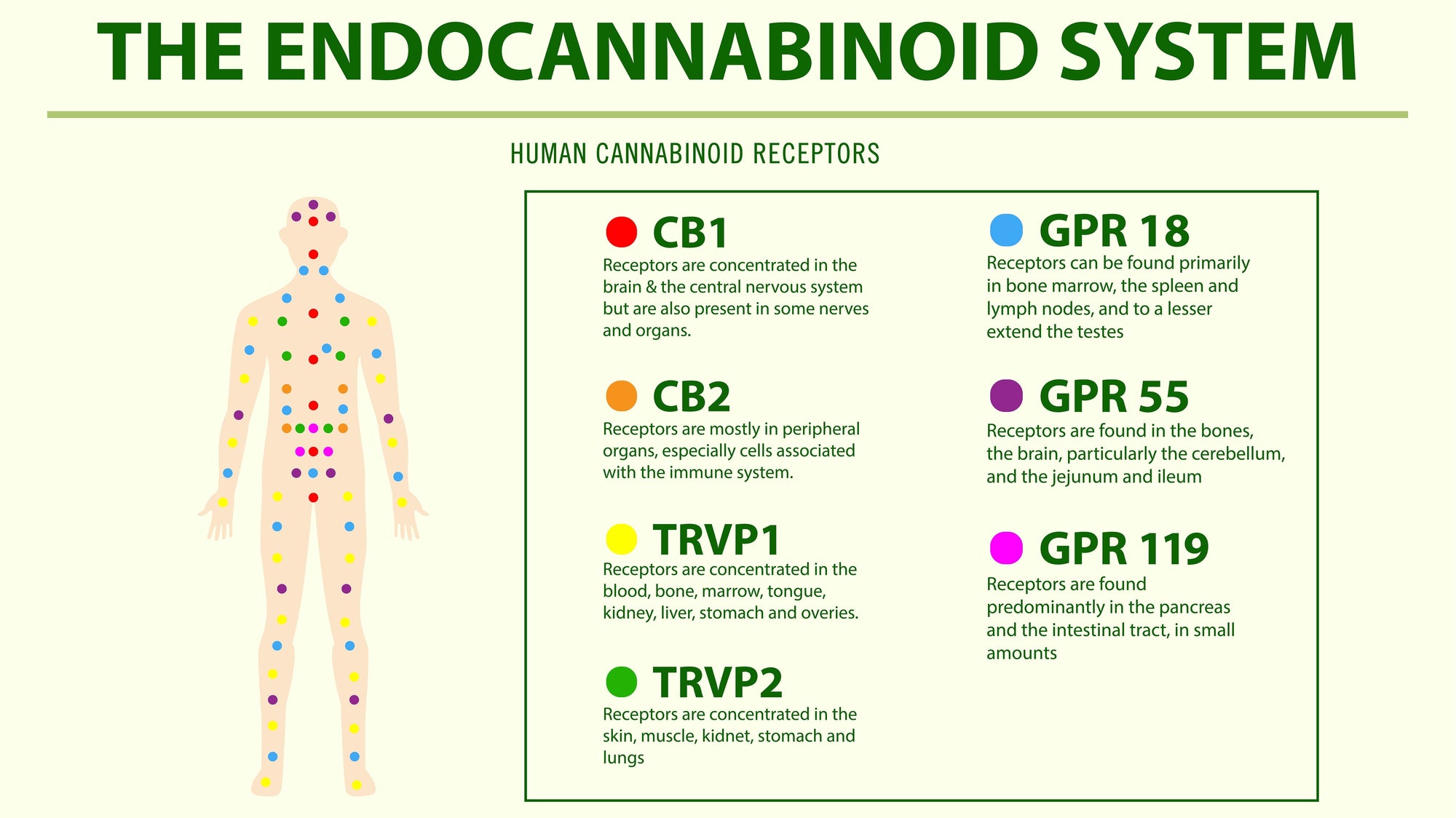

· By Gareld Eaton
The Endocannabinoid System: Part 2 What’s Going On In Here?
The endocannabinoid system (ECS) plays a key role in regulating and balancing how the body works. We learn from researcher Dr. Ethan Russo, that this system modulates pain, memory, emotion, digestive motility, appetite, seizure threshold, immune response, reproductive health, skin function and many other actions to
keep us in good health.
The ECS itself consists of endocannabinoids (the cannabinoid chemicals we make), the receptors they lock into, and the enzymes to build and break them down (which also have medicinal activity).
The two primary and most studied endocannabinoids are 2-AG (2-Arachidonoylglycerol) and anandamide aka AEA (N-arachidonoylethanolamide). They are fatty acid compounds, made predominantly in the brain. 2-Ag is the most abundant cannabinoid in our body, and regulates the release of our neurotransmitters, including both the calming and stimulating ones. It’s involved in pain, inflammation, cognition, emotions, addiction, immune activity and more. Anandamide also affects the release of neurotransmitters, regulates mood and provides pain relief. Once these endocannabinoid compounds are released and reach their suitable receptor(s), like the right key opening a lock, things happen. The receptor changes shape, and the body responds.
In addition to the two main endocannabinoids, (2-AG and AEA), there are nearly 100 other endocannabinoids, made in a variety of tissues, including the skin, certain immune system cells, brain, muscle, and fatty tissues.
The two main receptors that these endocannabinoids bind are named CB-1 and CB-2 receptors. The CB-1 receptor is found mainly in the brain and spinal cord. It is a psychoactive, pain-relieving, and immune-regulating receptor. The CB-2 receptor is found primarily in circulating immune cells and other peripheral tissues. It is an anti-inflammatory and immune-regulating receptor. The main endocannabinoids (2-AG and anandamide) bind to both these CB-1 and CB-2 receptors. Some tissues have both CB-1 and CB-2 receptors in them (skin, gut). We are still learning about this foundational, but relatively unexplored system.
There are other receptors in addition to CB-1 & CB-2 that welcome cannabinoids (including the plant phytocannabinoids). The TRPV family, the PPAR family, the GPCR family, 5-HT and other receptors impact the ECS everywhere inside us, and even topically on our skin. This allows many compounds both from within and from outside--what we ingest and what we apply topically—to interact with many of these receptors to benefit us.
Our endocannabinoids are made as needed by the body and broken down by enzymes after fulfilling their function. Both internal and external stimuli activate the ECS to respond, and bring the body back into balance. We know anandamide is released when pain is stimulated, and broken down by a compound called FAAH (fatty acid amide hydrolase). 2-AG is degraded by MAGL (monoacylglycerol lipase) and others. There are also enzymes to create the endocannabinoids, but this is too complex a discussion for this blog.
Additionally, there are other compounds which prevent our endocannabinoids from breaking down. This keeps those endocannabinoids around longer. Targeting these “breakdown” enzymes helps improve the overall endocannabinoid tone of our body. Plants, too, can interact with our ECS system. Cannabis is one we are all familiar with that does this. Are there others?
(Stay tuned for more about this amazing system, and what else turns it on…)

